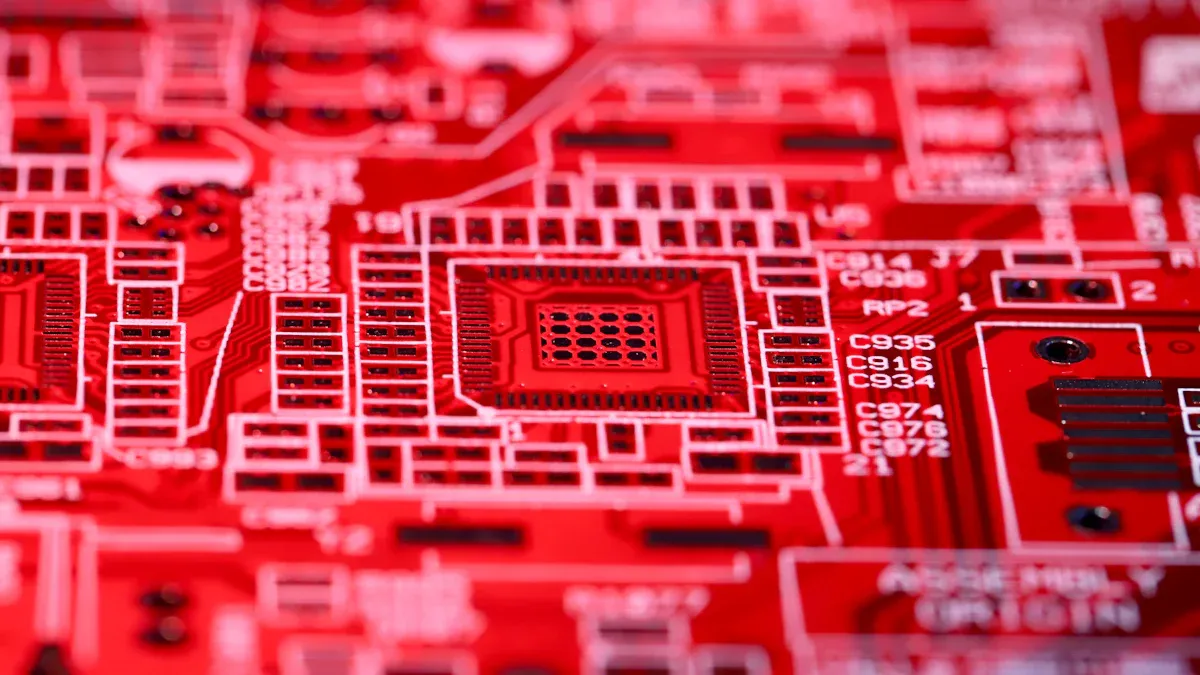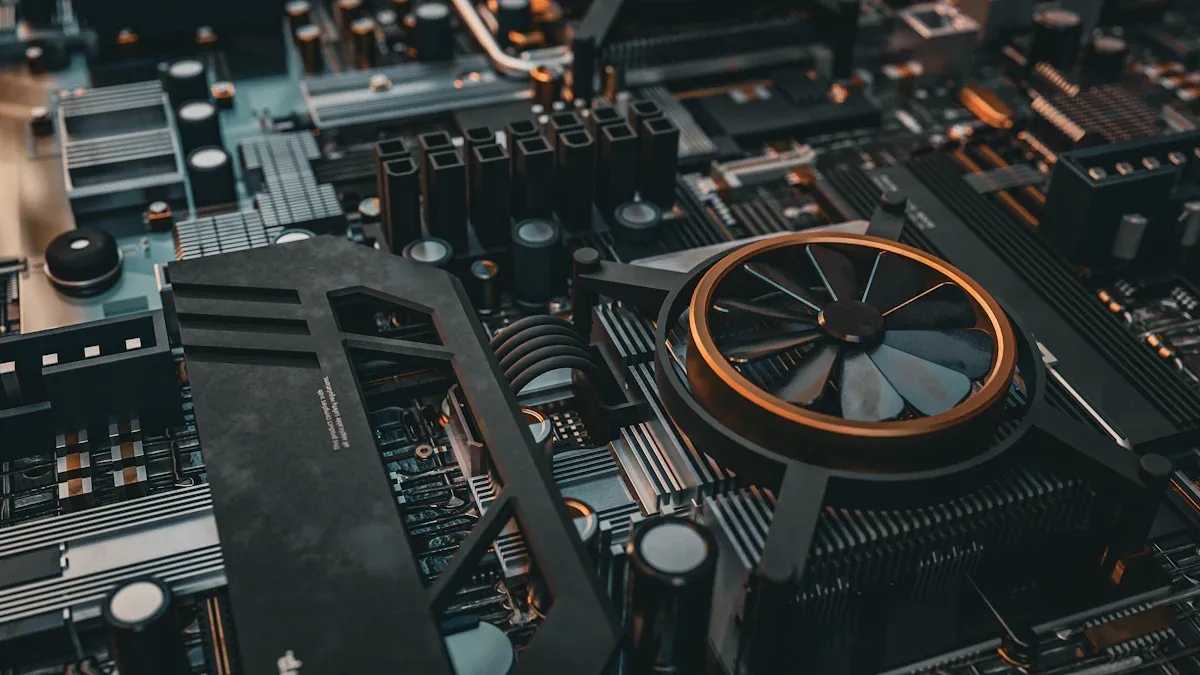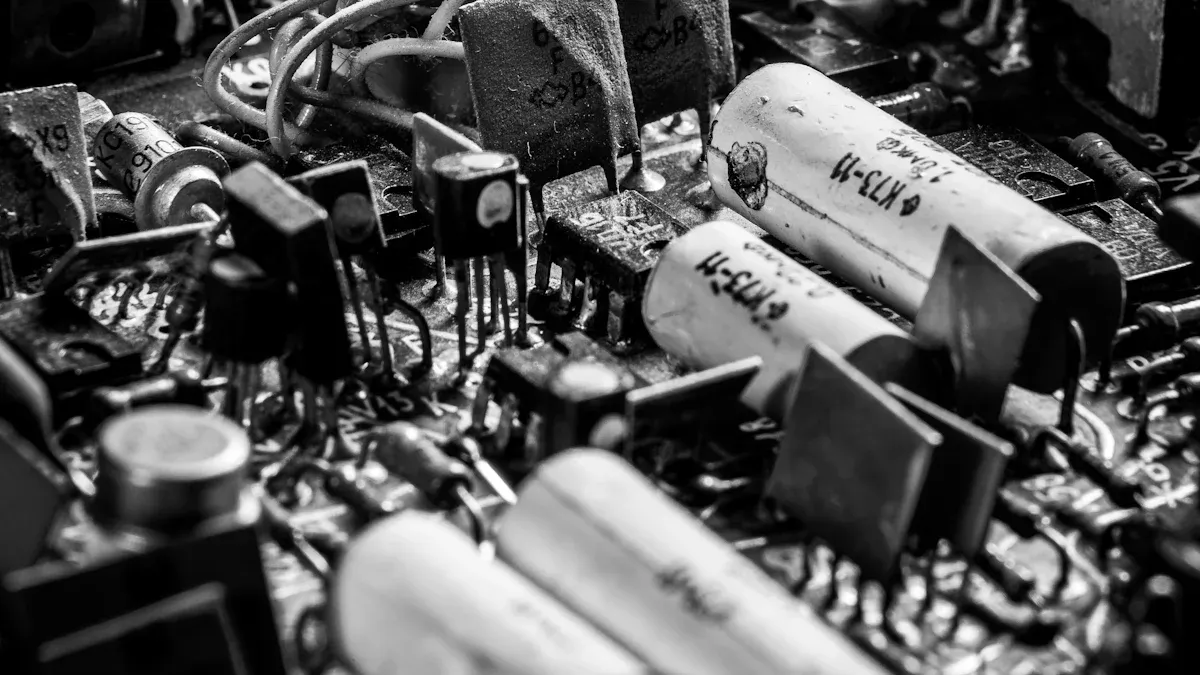Tailoring the Right Power Rectifier to Your Requirements

Choosing the right power supply rectifier is essential for keeping your system functioning optimally. Each application requires a careful examination of technical specifications. It's important to verify critical factors such as output voltage, current, and ripple voltage. Additionally, consider the behavior of the load. Efficiency, cooling, and reliability are crucial for long-term operation. Incorporating safety features and adhering to regulations safeguards both your devices and users. Striking a balance between price and performance ensures you receive good value and quality.
Key Takeaways
Pick the right rectifier type for your power needs. Half-wave rectifiers are easy but not very efficient. Full-wave and bridge rectifiers work better for more power.
Always check the rectifier's input and output voltage ratings. Matching these stops overloads and keeps things working well.
Think about ripple voltage when choosing a rectifier. Less ripple gives smoother power, protects devices, and works better.
Choose a rectifier with safety features. Look for protection from too much current or heat to stay safe.
Balance price and quality when picking a rectifier. A good one may cost more at first but saves money later with better performance and lasting longer.
Understanding the Type of Rectifier

Picking the right rectifier is key to changing AC to DC. Different rectifiers work better for certain tasks. Let’s look at the most common types.
Half-Wave Rectifiers
A half-wave rectifier is the simplest kind. It lets current flow only during the positive part of the AC wave. The negative part is blocked, creating a bumpy DC output. It’s easy to use but less efficient and has more ripple than other types.
Key Efficiency Metrics:
Max conversion rate: About 40.5%.
Ripple factor: High, causing unstable output.
Transformer use: Less effective than other rectifiers.
Half-wave rectifiers are good for small devices where efficiency doesn’t matter much. But they don’t work well for high-power needs.
Full-Wave Rectifiers
Full-wave rectifiers use both the positive and negative parts of the AC wave. This makes the DC output smoother and more stable. They are more efficient and reliable, so they’re used in many systems.
Metric | Half-Wave Rectifier | Full-Wave Rectifier |
|---|---|---|
Average DC Output Voltage | Lower | Higher (0.637Vmax) |
Ripple Frequency | Same as input | Double the input |
Ripple Factor | ~1.21 | Lower (more stable) |
Efficiency | Lower | Higher |
Transformer Utilization Factor | Lower | Higher |
Full-wave rectifiers are better for medium to high-power systems. They give stable power with less ripple.
Bridge Rectifiers
Bridge rectifiers are a type of full-wave rectifier. They use four diodes in a bridge shape. This design skips the need for a center-tapped transformer, saving space and cost. They use both parts of the AC wave, making them efficient with low ripple.
Advantage | Bridge Rectifier | Half-Wave Rectifier |
|---|---|---|
Efficiency | Higher | Lower |
Ripple Factor | Lower | Higher |
Utilization of AC Cycle | Both halves | One half |
Need for Center-Tapped Transformer | No | Yes |
Bridge rectifiers are common in electronics for their great performance. They work well when space and efficiency are important.
Center-Tapped Rectifiers
A center-tapped rectifier is a full-wave rectifier. It uses a center-tapped transformer to change AC to DC. The transformer splits its secondary winding into two equal parts. The center tap acts as a reference point. Two diodes handle both positive and negative AC waves. This creates a smoother DC output.
How It Works:
The transformer’s secondary winding makes an AC voltage.
In the positive half-cycle, one diode works while the other stays off. Current flows through the load.
In the negative half-cycle, the diodes switch roles. The second diode works, and the first one turns off.
This process creates a steady current in one direction. The result is a full-wave rectified output.
Advantages of Center-Tapped Rectifiers:
Better Efficiency: It uses both halves of the AC wave, making it more efficient than a half-wave rectifier.
Smoother Output: The DC output has less ripple, so less filtering is needed.
Simple Circuit: Only two diodes are used, making it less complex than a bridge rectifier.
Limitations:
Needs a Special Transformer: A center-tapped transformer is required, which can be bigger and costlier.
Lower Voltage Output: The center tap splits the voltage, reducing the output compared to other rectifiers.
Applications:
Center-tapped rectifiers are used in low to medium-power systems. They are common in power supplies for radios, amplifiers, and other devices where efficiency and simplicity matter.
Tip: Think about whether a center-tapped transformer is available. Also, check your voltage needs. This will help you decide if a center-tapped rectifier is the best choice.
Key Technical Specifications for a Power Supply Rectifier
When picking a power supply rectifier, knowing its specs is crucial. These details show if it fits your system's needs. They help match the input, output, and load requirements. Let’s break down the main points.
Input and Output Voltage Ratings
A rectifier's voltage ratings show if it works with your power source. Input voltage is the AC power it can handle. Output voltage is the DC power it gives. Matching these ratings avoids system issues like overloading.
For accurate voltage info, check trusted sources like:
Technical Documentation
Data Sheets
Simulation/SPICE Models
These tools help you pick a rectifier that fits your power needs.
Current and Load Requirements
The current rating shows how much load a rectifier can handle. It must support peak and steady current without failing. Check your system's load to ensure it matches the rectifier's capacity. Standards like IEEE 493-1997 and IEEE 519-1992 offer helpful guidelines.
When checking load needs, think about:
Peak Current: The highest current your system might need.
Continuous Current: The average current needed over time.
Load Changes: How demand shifts could affect performance.
Choosing the right current rating keeps your system stable and safe.
Ripple Voltage and Filtering Considerations
Ripple voltage is leftover AC in the DC output. High ripple can harm devices and lower power quality. Use good filters to reduce ripple.
To measure ripple, try tools like:
Oscilloscope: Shows voltage changes over time for precise readings.
Digital Multimeter (DMM): Measures AC voltage for quick ripple checks.
The ripple factor, ( r = \left( \frac{V_{rms}}{V_{dc}} \right) \times 100 ), shows DC purity. Lower ripple means smoother power. Pick a rectifier with low ripple and use filters like capacitors or inductors to improve quality.
Tip: Always check the ripple voltage in the datasheet to ensure it suits your system.
Efficiency, Cooling, and Reliability in Rectifiers

Cutting Down Power Loss
Lowering power loss helps rectifiers work better and last longer. Different rectifiers have unique designs that affect their efficiency. The table below shows ways to reduce power loss for common rectifiers:
Rectifier Type | Description | How to Improve Efficiency |
|---|---|---|
Half-wave Rectifier | Uses one diode, blocks negative cycle, wastes power. | Not ideal for most uses. |
Full-wave Rectifier | Uses two diodes, works in both cycles, gives steady output. | More efficient than half-wave designs. |
Voltage Multiplier | Adds rectifiers to increase output, good for low power needs. | Cuts power loss with smart design. |
Dickson Multiplier | Improved design, lowers unwanted effects but has efficiency issues. | High voltage causes some power leaks. |
Reducing Reverse Loss | Lowers leakage when current flows backward, boosts efficiency. | Helps rectifiers work better. |
Choose a rectifier that fits your system's power needs. For example, full-wave rectifiers are better for medium or high-power systems than half-wave ones.
Managing Heat and Using Heatsinks
Good heat control stops overheating and keeps rectifiers working longer. Heatsinks help remove heat made during use. The material of the heatsink affects how well it works.
Copper heatsinks spread heat well and work efficiently.
Aluminum heatsinks are cheaper and lighter but less effective.
Graphite foam heatsinks can work like aluminum but are less durable.
Pick a heatsink based on your rectifier's heat level and where it will be used. Managing heat properly keeps your rectifier safe and stable.
Making Rectifiers Last Longer
A rectifier’s life depends on handling heat changes and stress. Studies show temperature changes during use can affect how long they last. For example, rectification mode causes a 4 °C change, while inversion mode causes a 5.5 °C change. Keeping temperatures steady helps rectifiers last longer.
To make rectifiers more durable, watch their heat levels and pick designs that match your needs. This reduces wear and lowers the chance of failure over time.
Safety, Rules, and Budget When Picking a Rectifier
Following Important Rules
Choosing a rectifier that meets rules keeps it safe to use. These rules include testing, checking, and fixing problems regularly. For example, systems like cathodic protection need yearly checks to stay compliant. Below is a table of key tasks:
Task | How Often | What It Involves |
|---|---|---|
Test pipelines with cathodic protection | Once a year | Follow rule § 192.463 for compliance. |
Check cathodic protection rectifiers | Six times a year | Make sure voltage and current are correct. |
Inspect rectifiers checked remotely | Once a year | Confirm they are working safely and reliably. |
Test reverse current switches and diodes | Six times a year | Ensure they protect structures properly. |
Fix any problems found | Within six months | Plan repairs and get permits if needed. |
Following these rules helps avoid risks and meet power grid needs.
Checking Safety Features
Safety features protect devices and people from harm. Look for rectifiers with protections like overcurrent, overvoltage, and heat shutdown. These features stop damage during power spikes or overheating. For example, rectifiers with heat control can handle high temperatures without breaking. This keeps them working well even in tough conditions.
Think about where the rectifier will be used. Outdoor setups may need weatherproof cases. Industrial areas might need shields to block electrical noise. Picking rectifiers with good safety features lowers downtime and makes them last longer.
Finding the Right Price and Quality
It’s important to balance cost, performance, and how long the rectifier lasts. Good rectifiers, like the MBRxxPT series, work efficiently and last a long time. They waste less energy and stay cooler with low voltage drops and leakage. They can also handle heat up to 175°C, making them reliable for many uses. While they cost more upfront, they save money over time by needing less maintenance.
When choosing, look at the total cost over time, not just the price. A good rectifier should meet your power needs and work reliably for years. This way, you get the best value for your money.
Picking the right power supply rectifier keeps your system running well. Check the type, specs, efficiency, safety, and price. These factors help match the rectifier to your needs. Always read datasheets and ask experts for advice. This helps you avoid problems and ensures good performance over time.
Tip: The right rectifier saves energy and makes devices last longer.
FAQ
What does a power rectifier do?
A power rectifier changes alternating current (AC) into direct current (DC). This gives your devices steady and usable power. It’s important for things like chargers, power supplies, and machines.
How can I pick the right rectifier?
Look at your system's voltage, current, and load needs. Check the rectifier's efficiency, ripple voltage, and safety features. Choose a rectifier that fits your device, whether it’s small or industrial.
Why does ripple voltage matter?
Ripple voltage shows leftover AC in the DC output. Too much ripple can harm devices and lower power quality. Filters like capacitors or inductors reduce ripple for smoother power.
Do rectifiers need cooling?
Yes, rectifiers make heat when they work. Cooling tools like heatsinks or fans stop overheating. Good cooling helps rectifiers last longer and work better.
Are pricier rectifiers always better?
Not always. Expensive rectifiers may last longer and work well. But you should balance cost with your system’s needs. Think about efficiency, durability, and upkeep to decide wisely.
Tip: Check datasheets and ask experts to find the best rectifier for your needs.
See Also
Ensuring Consistent Power Supply for Telecom Equipment Cabinets
Understanding Amperage Requirements for Communication Power Supplies
Key Features to Consider in Telecom Power Supplies
Calculating Power Systems and Battery Needs for Telecom Cabinets
Integrating Solar Inverters and Batteries for Telecom Power Solutions
CALL US DIRECTLY
86-13752765943
3A-8, SHUIWAN 1979 SQUARE (PHASE II), NO.111, TAIZI ROAD,SHUIWAN COMMUNITY, ZHAOSHANG STREET, NANSHAN DISTRICT, SHENZHEN, GUANGDONG, CHINA

